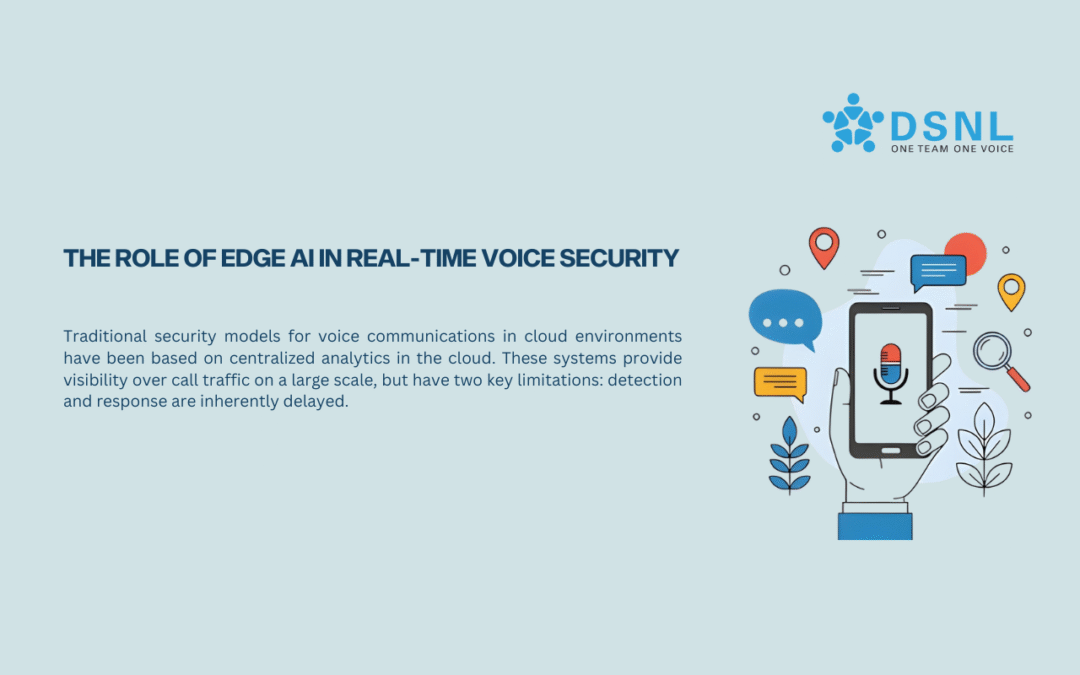Traditional security models for voice communications in cloud environments have been based on centralized analytics in the cloud. These systems provide visibility over call traffic on a large scale, but have two key limitations: detection and response are inherently delayed.
In contrast, Edge AI systems process and analyze voice data locally, right at the edge of the network, where the call is generated or received. This approach of distributed intelligence allows for immediate recognition of any threat, whether that’s an anomalous packet pattern or an unexpected voice command.
Real-time Anomaly Detection with Edge AI
The primary benefit of deploying AI models at the network edge for voice security is real-time anomaly detection. These models are trained using machine learning techniques to recognize normal versus abnormal patterns in call traffic based on both historical and real-time data.
For instance, when a call is made, an anomaly can be detected if the packet streams suddenly diverge from expected patterns or if the call packet contents show signs of tampering. In response, the edge node can automatically quarantine or isolate the anomalous call, effectively containing the threat in place.
This preemptive defense stops attacks before they spread through the entire voice system and can be done without any compromise on the quality of other calls.
Combating Call Fraud and Spoofing Attacks at the Edge
Call fraud and spoofing are serious security problems for companies, especially in industries like financial services and customer support. Attackers make it appear as if they’re someone else by manipulating or falsifying Caller ID information.
Privacy by Design: Local Processing for Voice Security
One of the key considerations today with cloud-based AI solutions is data privacy. Voice recordings, metadata, and user identity data stored in the cloud create a risk of non-compliance as well as potential damage to corporate reputations if there’s a breach.
Edge AI can mitigate this by minimizing the amount of data leaving endpoints. Processing voice data locally and only transmitting metadata or abstract insights to the cloud not only reduces latency but also addresses privacy concerns. By architecting networks in a way that sensitive voice data never leaves its local environment, businesses gain an additional layer of data privacy.
Scaling Voice Security with Distributed AI Intelligence
As companies expand and operate across multiple geographies, scaling consistent and comprehensive security has become more complex. But one of the benefits of Edge AI’s distributed architecture is that it’s designed to scale naturally.
Localized models can be deployed for each geographic area that are tailored to specific local regulations, network conditions, and even regional call traffic patterns. Since each edge node independently learns from the traffic it processes, over time, the system benefits from a self-evolving ecosystem of threat models. These models refine themselves continually based on new attack vectors as well as normal behavioral data.
Conclusion
The convergence of cloud-based telephony and the rise in security incidents across endpoints is creating a strong business case for Edge AI. Intelligent detection and decision-making at the network edge, where calls are generated and completed, offers a far more powerful solution for voice security than can be delivered by legacy security or traditional cloud-centric AI.
By acting locally and in real time, Edge AI provides the best of both worlds: seamless, low-latency voice communications without any degradation in service quality, and a secure network that’s fully protected from today’s threats. The time to adopt edge-enabled security for voice is now, as businesses continue to invest in and expand their telephony infrastructure. Call us now to know more.

